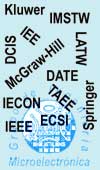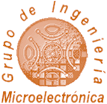
Mapa Web

Localización

Noticias

Info Santander

Gestión BD

|
| GIM>Investigación>Publicación |
| PUBLICACION |
| |
| Ficha completa |
| Título: | The COMPLEX methodology for UML/MARTE modeling and design-space exploration of embedded systems |
| Tipo: | Articulo en revista internacional |
| Lugar: | Journal of Systems Architecture, V.60, N.1, Elsevier, pp.55–78 |
| Fecha: | 2014-01 |
| Autores: |
Fernando Herrera
Héctor Posadas
Pablo Peñil
Eugenio Villar
F. Ferrero (GMV)
R. Valencia (GMV)
G. Palermo
|
| Líneas: |
Diseño y verificación de sistemas embebidos HW/SW
|
| Proyectos: |
FP7 IP 247999 COMPLEX
|
| ISBN: | 1383-7621 |
| Fichero: |
|
| Resumen: | The design of embedded systems is being challenged by their growing complexity and tight performance requirements. This paper presents the COMPLEX UML/MARTE Design Space Exploration methodology, an approach based on a novel combination of Model Driven Engineering (MDE), Electronic System Level (ESL) and design exploration technologies. The proposed framework enables capturing the set of possible design solutions, that is, the design space, in an abstract, standard and graphical way by relying on UML and the standard MARTE profile. From that UML/MARTE based model, the automated generation framework proposed produces an executable, configurable and fast performance model which includes functional code of the application components. This generated model integrates an XML-based interface for communication with the tool which steers the exploration. This way, the DSE loop iterations are efficiently performed, without user intervention, avoiding slow manual editions, or regeneration of the performance model. The novel DSE suited modelling features of the methodology are shown in detail. The paper also presents the performance model generation framework, including the enhancements with regard the previous simulation and estimation technology, and the exploration technology. The paper uses an EFR vocoder system example for showing the methodology and for demonstrative results.
Article |
|
|








